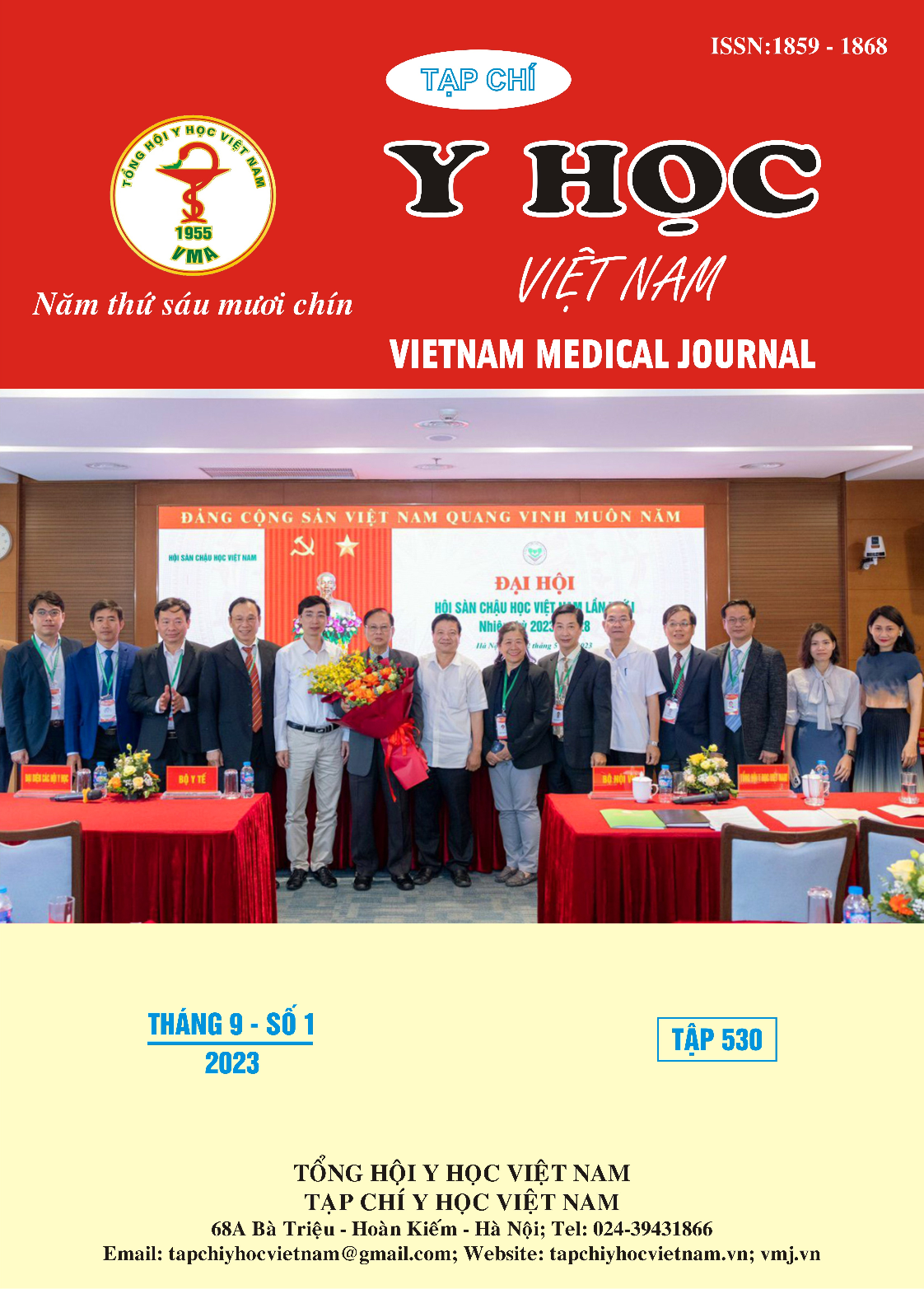STUDY OF THE ASSOCIATION BETWEEN HEPATIC CONTROLLED ATTENUATION PARAMETER USING FIBROSCAN AND METABOLIC SYNDROME IN INDIVIDUALS UNDERGOING REGULAR HEALTH CHECK-UPS AT MILITARY HOSPITAL 121
Main Article Content
Abstract
Objective: To determine the prevalence of metabolic syndrome (MetS) and non-alcoholic fatty liver disease (NAFLD) using Fibroscan and evaluate the relationship between the controlled attenuation parameter (CAP) and MetS. Subjects and methods: A descriptive study was conducted on 675 individuals who underwent regular health check-ups at Military Hospital 121 from February to May 2023. The CAP of these individuals was measured by Fibroscan, and the subjects were divided into two groups: those with MetS and those without MetS, based on the AHA/NHLBI + IDF (2009). Results: The prevalence of MetS was 56%; the prevalence of NAFLD was 58.7%, with grade 1 accounting for 17.3%, grade 2 accounting for 22.1%, and grade 3 accounting for 19.3%. The CAP and the degree of liver fat showed a positive correlation with the components of MetS (p<0.01). The CAP was correlated with all components of MetS and also correlated with ALT, AST, GGT (p<0.01). The logistic regression analysis shows that individuals with higher CAP scores have an increased likelihood of developing metabolic syndrome (MetS), with an odds ratio (OR) = 1.016. Conclusion: The prevalence of metabolic syndrome in the regular health check-up group at Military Hospital 121 is 56%, and the prevalence of non-alcoholic fatty liver disease (NAFLD) assessed by FibroScan is 58.7%. The Controlled Attenuation Parameter (CAP) has predictive value for metabolic syndrome and is also associated with the quantity of metabolic syndrome components.
Article Details
Keywords
metabolic syndrome, fatty liver disease, Fibroscan, controlled attenuation parameter (CAP), correlation.
References
2. Nguyễn Thị Hoa (2021), Đánh giá đặc điểm lâm sàng, cận lâm sàng và tỷ lệ gan nhiễm mỡ trên bệnh nhân có hội chứng chuyển hóa bằng máy FIBROSCAN TOUCH tại bệnh viện 198, Bộ Công an. Tạp chí nội tiết và đái tháo đường năm 2021- số 45, tr 70-75.
3. Trần Thừa Nguyên, Trần Hữu Dàng (2023), “Tỉ lệ hội chứng chuyển hóa của người dân Việt Nam”, Tạp chí Hội nội tiết – Đái tháo đường miền trung Việt Nam. Số 60 năm 2023.
4. Fabrellas N, Herna´ndez R, Graupera I, et al. (2018) Prevalence of hepatic steatosis as assessed by controlled attenuation parameter (CAP) in subjects with metabolic risk factors in primary care. A population-based study. PLoS ONE 13(9): e0200656.
5. Lédinghen, V, Vergniol J, Capdepont M, et al (2013). Controlled Attenuation parameter (CAP) for the diagnosis of steatosis: a prospective study of 5,323 examinations, Journal of Hepatology (2013).
6. Sasso M, Beaugrand M, Ledinghen V, et al (2010). Controlled attenuation parameter (CAP): A novel VCTETM guided ultrasonic attenuation measurement for the evaluation of hepatic steatosis: preliminary study and validation in a cohort of patients with chronic liver disease from various cause. Ultrasound in Medicine and Biology, Vol 36, No 11. 1825-1835
7. Wanlu S, Changgui S, Guangyu C, et al (2017). Clinical study of the relationship between controlled attenuation parameters of the liver and metabolic syndrome [J]. Chinese Journal of Hepatology, 2017, 25 (2): 128-133.
8. Yue-Yan Hu, Ning – Ling Dong, Qui Qu, et al (2018). The correlation between controlled attenuation parameter and metabolic syndrome and its components in middle-aged and elderly nonalcoholic fatty liver disease patients. Medicine (Baltimore) . 2018 Oct;97(43).


